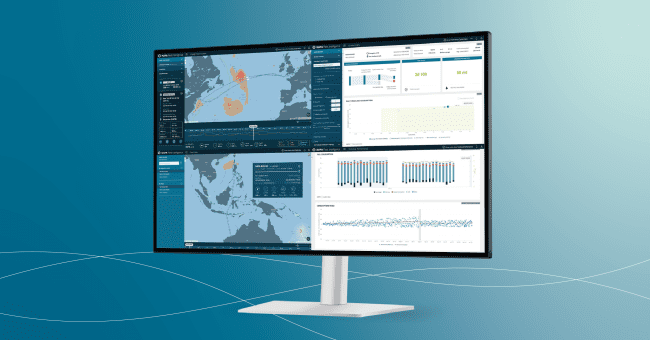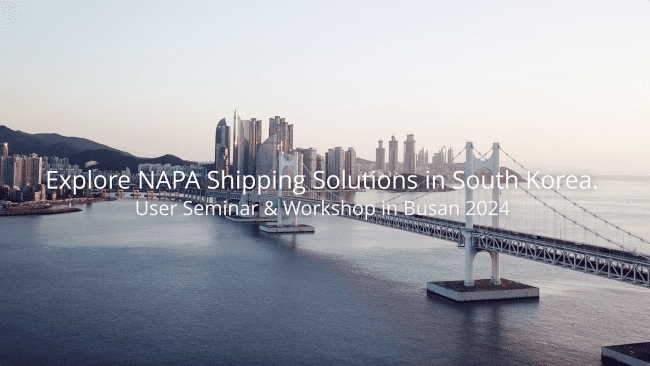View from the CEO: COP26 in review
by Mikko Kuosa, CEO, NAPA
Will Shipping’s conversations at COP26 steer change?
The shipping industry accounts for around 2-3% of all CO2 emissions, with some projections estimating that the industry could account for 17% of total annual CO2 emissions by 2050. Shipping was, therefore – rightly – officially on COP26’s agenda for the first time in history.
From my perspective, the conversations at COP26 demonstrated a strong willingness from key stakeholders to step up efforts – for example, there have been many calls for a carbon tax and many of shipping’s leaders, including us here at NAPA, joined the Getting to Zero Coalition. Initiatives such as the Declaration on Zero Emission Shipping by 2050 and Clydebank Declaration also reflect an unprecedented level of government commitment to instigate tangible change.
Looking ahead: can EEXI and CII work?
To move forward as an industry, it’s important that we don’t lose the drive and momentum of COP26, especially now as we commence MEPC 77. While talk of pledges is a positive sign, we need action that reflects the real opportunity we have at our fingertips right now. To ensure that the proposed decarbonization pathways result in significant carbon emission reductions and that their impact is measured using standardized frameworks, we must focus more on energy efficiency and increase cross-sector collaboration. Commercial incentives that promote inefficient shipping must also be revised, as vessels are still operating in a ‘completely crazy’ way, rushing to wait outside ports. This is why, the routes to EEXI and CII must be critically assessed for their effectiveness, and key flaws in shipping’s decarbonization plan must be discussed. Regardless of the marginal efficiency gains vessels will achieve in response to EEXI and CII, unless the industry can change these misaligned incentives, it will still be difficult to reduce GHGs meaningfully.
I am proud to lead a company that truly supports decarbonization with real action. Today, our NAPA Shipping Solutions team released preliminary results of a study showing that while EEXI will cut emissions, it will not be enough to facilitate the change required to meet emerging environmental regulations.
Going beyond regulation, how else can we decarbonize?
There are many incentives that are not regulatory; capital and ESG are supporting sustainability more and more. Therefore, with or without a prompt from the IMO, it is within owners’ and operators’ best interest to get ahead of the pack and start reducing operational emissions now. This can be done profitably by taking advantage of proven and effective solutions that are already on the table. A combination of such readily deployable energy efficient digital technologies, such as our Voyage Optimization solutions, can have a significant impact across the supply chain now. They will also become commercially imperative in the coming years as the development of pricier low and zero carbon emission fuels leave vessel owners and operators at risk of losing their competitive edge.
We also believe that there must be more meaningful collaboration, both within and outside the industry. That’s why, together with maritime leaders like Airseas, Houlder, Norsepower, and I-Tech, we have called for a renewed industry focus on investment in energy efficiency solutions that are fully commercially available, for both retrofits and newbuilds, to extend the lifespan of existing fleets and reduce the environmental footprint of the sector. If we are to meet such a colossal joint objective, we must without a doubt, work together.
The role of NAPA
At NAPA, we always look at the bigger picture. That is why, as a global team of innovators, leaders, and problem-solvers we want to address existing commercial incentives that promote inefficient shipping practices, like rushing to wait outside ports. We recognize the problem, and we want to solve it. NAPA Fleet Intelligence software will allow the industry to work collaboratively, as opposed to a siloed nature.
We also want to lead by example and so, are continuing to proactively innovate and collaborate with other industry leaders. Recently, in partnership with Norsepower, we ran a hackathon to measure the benefits of combining wind propulsion technology with our Voyage Optimization software. NAPA Shipping Solutions has, and will continue to, evaluate cleantech and the effectiveness of various retrofits, from Rotor Sails to the new propeller or propulsion arrangements, to better understand how voyage performance data can feed into more efficient and intelligent vessel design.
With regulatory, consumer and financial pressure mounting, there is no doubt that the shipping industry needs to change, and rapidly. Not only must we plan ahead, but we must also act now using solutions available today to incite real environmental change. With the support of a driven, motivated team of maritime technology experts, I look with anticipation to our role in supporting shipping to solve its current decarbonization challenges and exceed regulatory expectations. Never has our role been more important.


